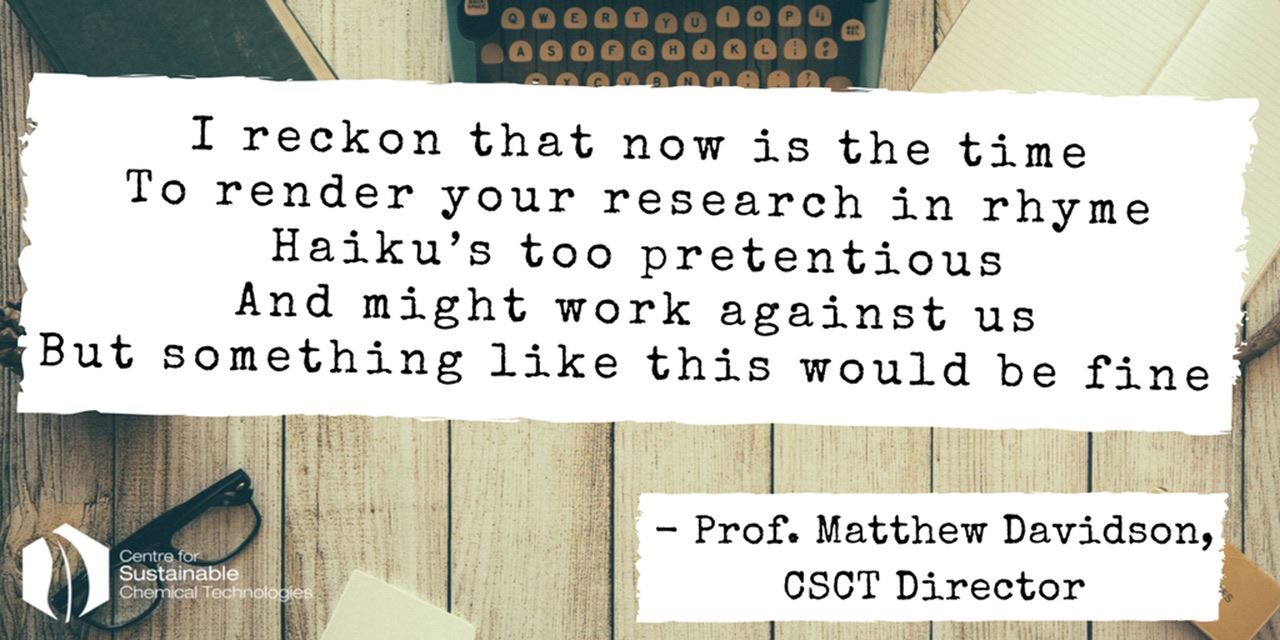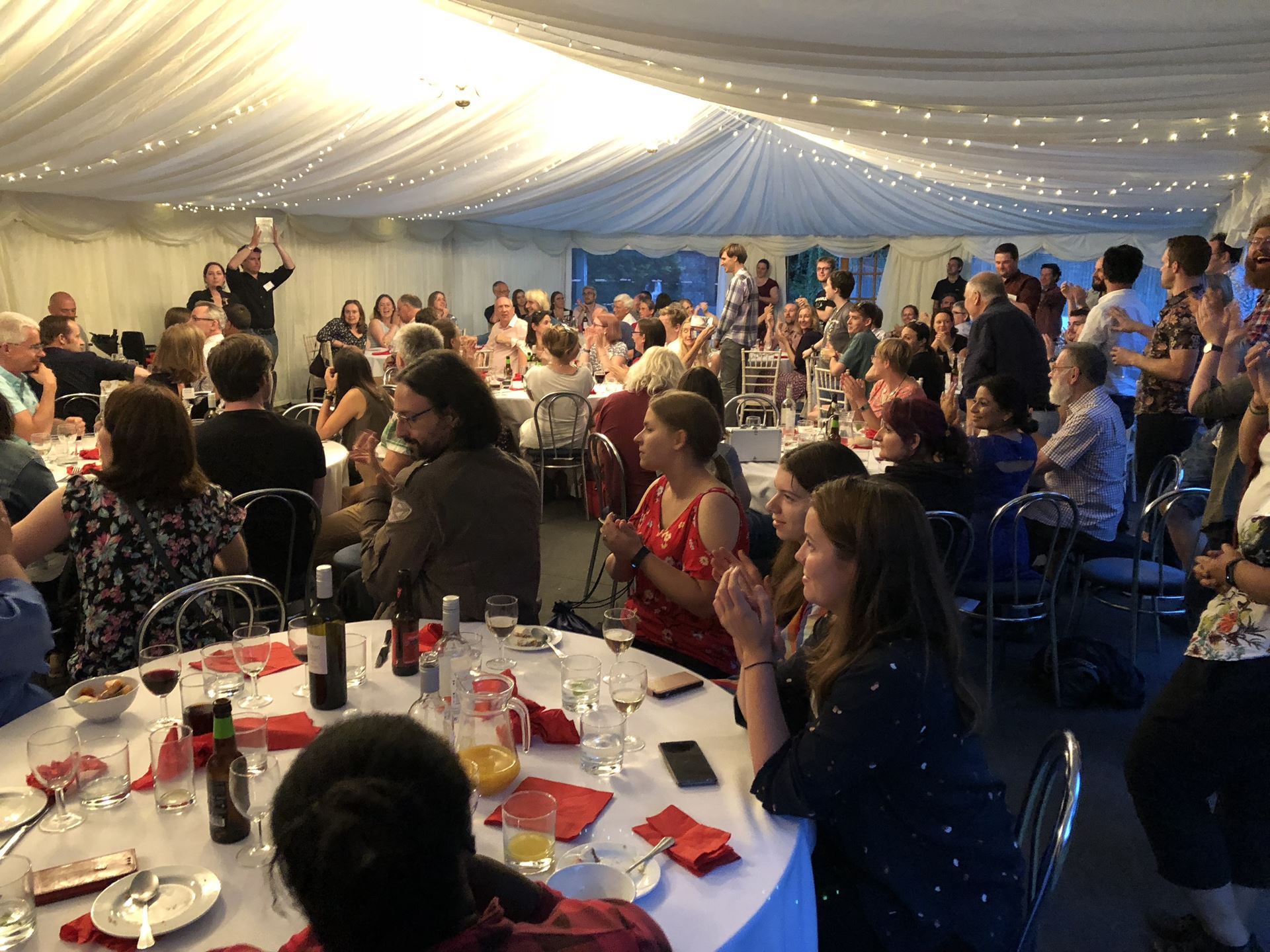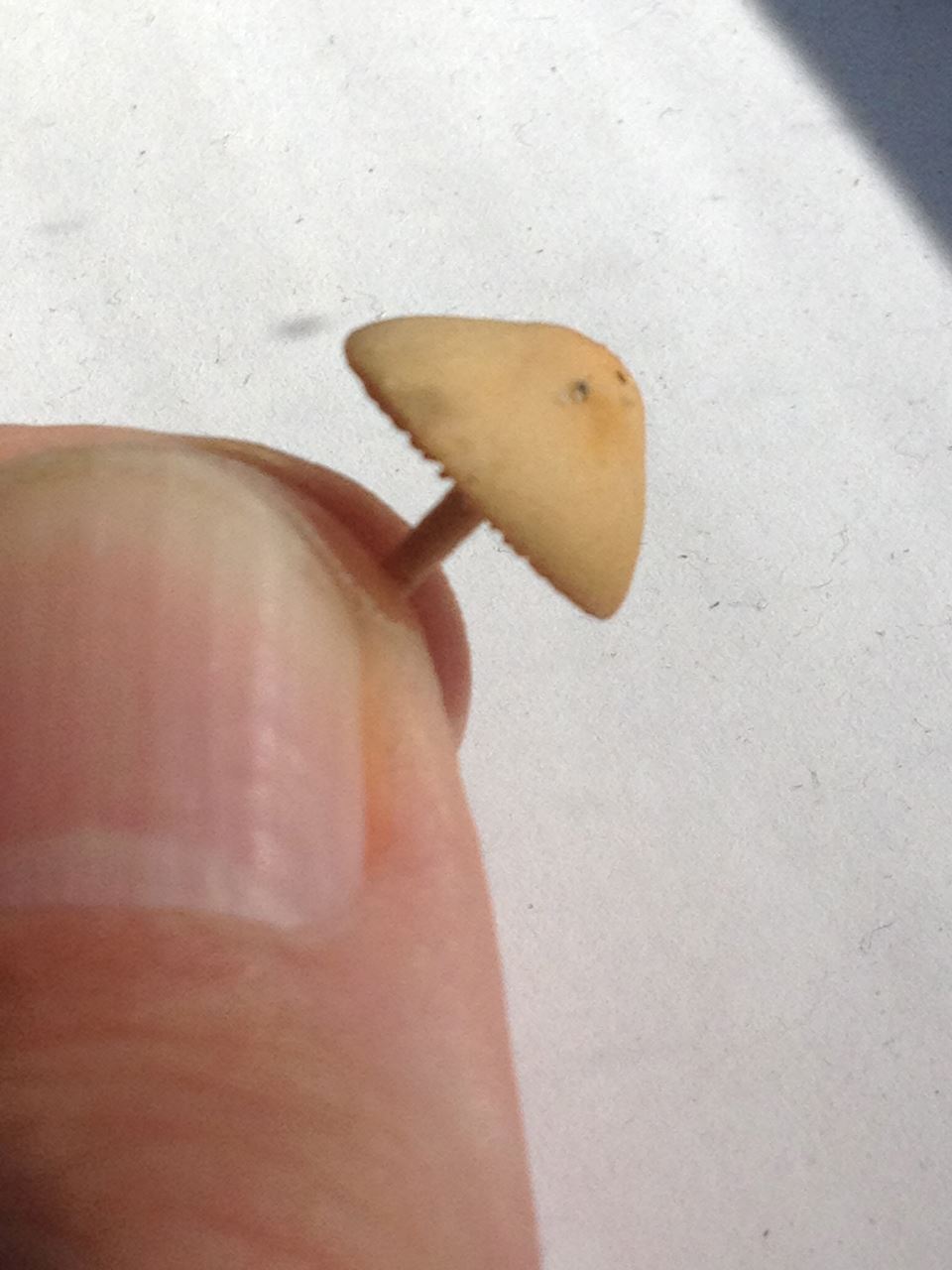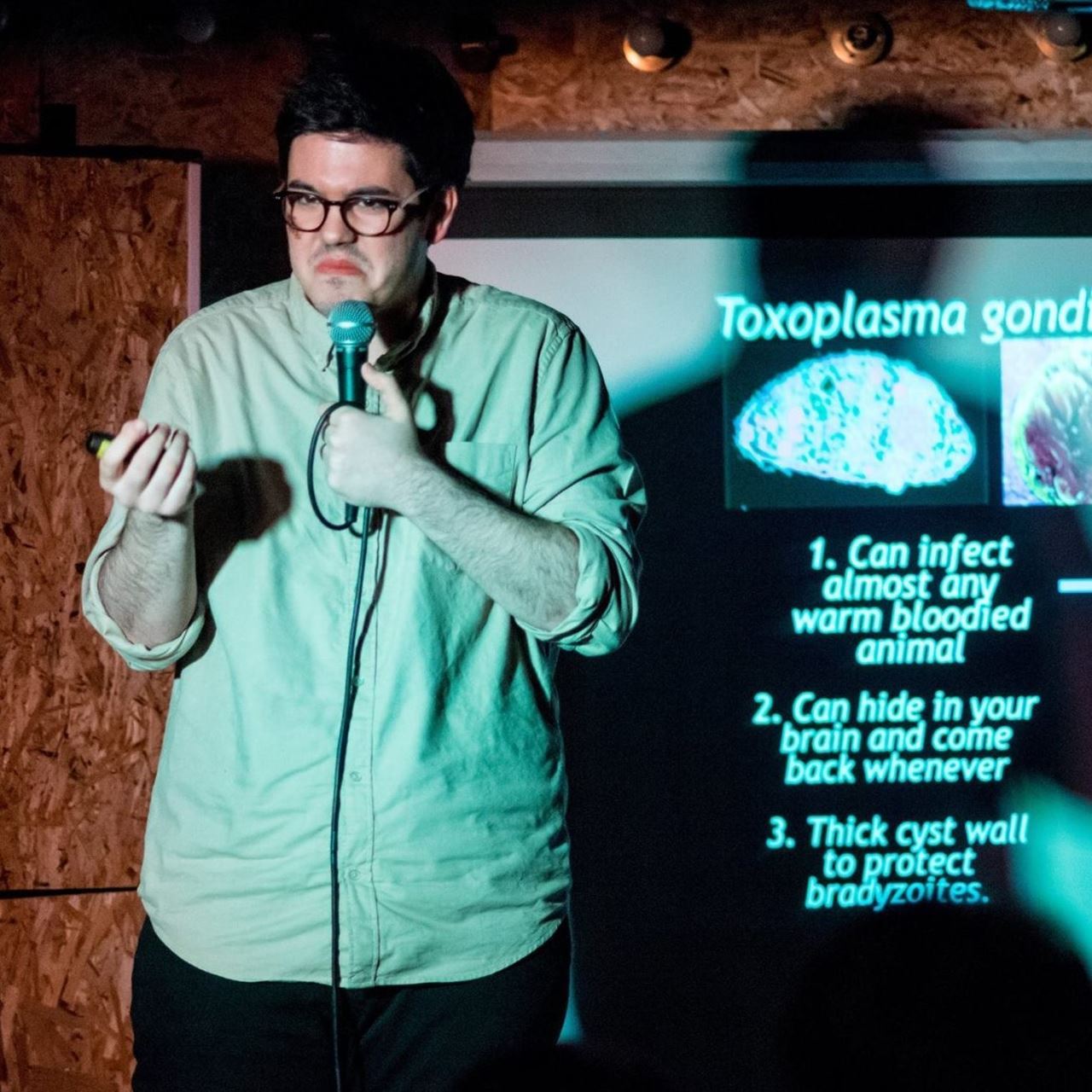- Home
- Members' Area
- BIG newsletter 45 Autumn 2018
BIG Members' e-newsletterissue 45 - AUTUMN 2018 BIG Skills Day: How to develop training sessions Spaces still remain on our forthcoming skills day which has been put together for us by Sarah Cosgriff, a science communicator and trainer. The "How to develop a training session" Skills Day is an introductory day for anyone who has never delivered training or who has limited experience of delivering training. The goals of the day are to help you understand what makes a great learning experience and how to develop effective training sessions. Very little previous experience is needed for you to get something out of the day. You will learn:
The Skills Day will run on Wednesday 17th October, 9.30-4.00pm at ThinkTank in Birmingham and costs £45 for BIG members including lunch and coffee. I wrote this and thought of YOU! Sonal Katyal They say that the BIG Event is a wonderful opportunity to build your network. I can confirm this from my own experience this year. Yes, everyone there was eager to meet people and expand their map of SciComm network. However, they did not step back from sharing a smile or even making friends for no reason at all. I will always remember the kindness of those with whom I shared my first BIG Event meal at the science centre’s café and my last dinner at a wonderful Italian place, and those who made sure I reach the bus stand on time or my BnB safely every night. It felt nice when on the third day there was someone who called my name out and said, “Sonal! Come, sit with us”. I will always treasure these memories and the lovely people who welcomed me with open arms. For someone who is in a struggling phase of her career, a little ray of sunshine, a ray of inspiration, means an added encouragement to keep fighting. I feel the Event was the right place to find this. In three days, I met 160 people! I remember I was really overwhelmed and tired of repeating my introduction again and again. Later I realised, every time that I was talking about myself, I was becoming more and more confident and rather happy, about my work, and about how I have climbed my ladder so far. I believe it had something to do with the positivity around me. I got to hear so many stories about everyone’s own interesting journey, so many struggles, so many wins and losses to learn from. I saw a spark in their eyes when they shared about how they designed their workshops or art-science work. I could see those tired nights in their eyes, when they told me about the ups and downs they are going through. I could sense the experience, the knowledge, in the voice of those whose hands and brains have contributed to this field for years. These,will always stay with me like fireflies in a forest. Whenever the paths will be dark and gloomy, they will glow bright to spread a smile across my face. Many times I find that people do not respect the job of a science communicator enough or do not understand it well. This can be really discouraging and frustrating. However, when you as a science communicator, see that your fellow science communicators are sailing in the ocean, no matter what, because they love it so much, your morale is strengthened. It makes you feel stronger to meet the challenges of the uncertain and difficult situations. An interesting thing I noticed is, that though BIG Event is a great opportunity to learn from other people’s experiences, you may also realise that your own path has been something no one else might have travelled. I come from a different country and thus face different challenges, be it in getting a job/PhD/project in the UK or one back in my own country. On my first day, this feeling actually broke me down. However, at BIG I learnt that even with the differences, there is a point where we all connect. The skill is to ask the right question in order to find that. For me, BIG wasn’t a place to look for my solutions, but an opportunity to get inspired by the passion that everyone carried in their hearts for their work. Sit with any sci-commer for a cup of tea and listen to them. You will find that the world is beautiful and is full of hardworking and wonderful people. At the BIG event, I not only had a cuppa of opportunities but many moments of cakes and Pimm’s to share as well. How lucky for me! Every morning I planned to leave earlier to catch some more sleepbut was never content enough with the amazing stories that people brought with them. So early goodnights never happened and I will always be thankful for that. The event was definitely a beautiful experience but the journey from my bursary application to my arrival at Winchester Science Centre was made beautiful as well by the kindness of the BIG Committee. I would like to thank Ian, Ashley and Sarah for always being there and answering all my endless queries. As some of you heard me saying this during ISTATOY, I see Sci-Comm as a community, as a family first. I am so glad that I am a part of it - I learnt new skills and made new friends. I left Winchester with a head full of new ideas and questions and a heart filled with love. The BIG Event in Winchester seems like such a long time ago now but if your memories of a brilliant conference have faded, here are some other reviews from a couple of our bursary winners to remind you... "As an early-career science communicator, having the opportunity to share my experiences and learn from others in the same field, more experienced than I, was invaluable. BIG enables me to be a part of a community of talented people who are passionate about working together towards a common goal that science should be diverse and accessible to everyone. As I was awarded the BIG Event Bursary, I was given the opportunity to convene two sessions which built my confidence through enabling me to contribute to the running of the event. The sessions I attended ranged from hands on workshops where I was able to try out new activities and demos to open discussions allowing me to delve deeper into key issues and challenges within science communication. I most enjoyed the times when we could network and discuss the different sessions, as everyone was buzzing with ideas and questions. For this reason, one of sessions I found most useful was ‘The Steady State Problem’; as the format allowed people to openly share their opinions and concerns with speakers, who had such different backgrounds and experiences of working as freelancers, that it encouraged a debate which was varied, insightful and offered practical advice for people to consider. I left the BIG Event 2018 feeling empowered, energised and ready to put into action what I had learnt." - Anna Pitts "Attending BIG 2018 was an exciting and rewarding experience. Throughout my research career, I have struggled to find enthusiastic STEM communicators in a university setting. At BIG 2018 I met a very positive, encouraging community of highly experienced STEM communicators. Everyone was very motivated to discuss the big challenges in STEM communication and engagement as well as provide valuable support and advice for my projects in the future. A great conference and embracing, supportive community." - Natalie Masento "Before the BIG Conference, I felt like an intruder in the sci-comm world. I haven’t studied for a PhD, I don’t have a Youtube channel, I don’t even have a particularly up to date twitter profile (my previous job had actively encouraged a heavily reduced online presence). But the more time I spent at BIG, the more I realised that my perceptions were all wrong. This conglomeration of science-loving individuals was so diverse that actually, I didn’t stand out like the proverbial sore thumb after all. Science, communicating science, watching people investigate and explore the realms of science themselves and learning more about the world for myself are my passions. And everybody else at the BIG Conference was exactly the same! How we got to the BIG event, the paths that led us there, were all so varied and unique but everyone was there for a shared goal, to open the scientific door for all. Our diverse backgrounds just added to the positivity and learning. The BIG Conference was a collection of incredible sessions sharing practices that had gone well and that could be adopted and adapted for various settings. Workshops were open and honest, yes they were predominantly filled with amazing, successful ideas to take away, but also ideas that had belly-flopped spectacularly (often with a “do not try this at home” warning) or practices that had created steep learning curves that would benefit everyone. We discussed the barriers that many people face when accessing science: physically, emotionally, socially and I came away from three days brimming with ideas, networking connections and excitement for what is on the sci-comm horizon (as well as a henna tattoo or two). Everyone was so warm and welcoming and by the end of the conference I felt like a member in the sci-comm world." - Lizzy Goodger A Tale of Two Villages (and two out of school activities..!)Rick Hall I was talking the other day to a teacher who was regretting the fact that fewer of her pupils were coming to school by bike. Because her school had recently enrolled pupils from a neighbouring village school now closed, more pupils were coming to school by taxi or minibus. Fewer bikes meant that there were fewer outings to the lake 5kms away to study the wildlife. Still Helena does take the younger class group out into the forest near the school on foraging expeditions, for berries and fungi. You’ll have guessed that I am writing about the school in Koli, the village in North Karelia, Finland which I visit every year, and where we have a Lab_13, and where our latest UK-based Scientist in Residence, Claire Simpson, has spent most of September, and where I will spend October next year. The forests, lakes and small(ish) mountains around Koli are inspirational; Sibelius wrote the Karelia Suite there. In the clump of birches and firs near the school a family of lynxes prowl; one pupil was upset the other day because a wolverine had got in and more than worried her sheep; and a bear was sighted earlier this summer. The forests at this time of year are sprouting fungi from every pore; some edible, some not so. Now can you imagine the paperwork that would be required to organize a walk into the autumnal woods in the UK? The parental consent forms, the risk assessments, the off-site visits forms, the advisory notices of allergies to this and that? When the snow comes in Koli, the students may come to school on their skis, and of course, cross-country skiing expeditions are regular and timetabled. The right to roam and to forage is part of the national legal framework of Finland, but more significantly for science learning, children from an early age are encouraged to explore and to appreciate what may prowl, growl or grow in the forests. I took sets of microscopes, clip-on phonescopes and Foldscopes out to Koli this time, and my night-camera. If the kids haven’t captured the lynx family on the camera there will be ructions. I told the 48 kids (the entire school roll) that I had never seen a lynx; when I asked how many of them had, they all raised their hands. And the other tale? We are putting on an event in the city for Ada Lovelace Day; one academy contacted us for help with transport, they didn’t have any trip budget this year. They do have a senior manager for trips, however. Just space to quote Wordsworth: One impulse from a vernal wood May teach you more of man, Of moral evil and of good, Than all the sages can. Sweet is the lore which Nature brings; Our meddling intellect Mis-shapes the beauteous forms of things:— We murder to dissect.
10% off Science Communication Masterclass!
BIG members are offered a 10% discount from the Science Communication Unit at UWE Bristol on their forthcoming Masterclass in Science Communication.
The Masterclass is an intensive course created to provide professional development in science communication. The Masterclass draws on the existing expertise of the team that delivers UWE's popular and practical MSc in Science Communication.
The Masterclass covers a range of topics including: the historical and social contexts of science communication, scientific literacy and public understanding, publics and engagement, face-to-face, media and online methods of engaging with the public. In addition, students are offered a choice of interactive sessions enabling them to concentrate on particular areas of interest.
The course has been designed for those with little or no experience in field of science communication and would be suitable for practising scientists wishing to enhance the public engagement element of their research, science graduates interested in science communication – or those seeking a career change, scientists/ teachers of science seeking continuing professional development and people working in Research Councils with a communication element to their role.
This Autumn’s Masterclass will be held at We The Curious in Bristol, 5-8 November 2018 and will cost £750 per delegate (before the 10% BIG Members discount, of course!). Find out more or apply here.
Can you describe your PhD in a limerick?
Rubina Kalra

Doctoral researchers at the University of Bath have been challenged to use their rhyming skills to describe their PhD research on social media in the form of a limerick.
The challenge, which used the hashtag #PhDlimerick, was started by the University’s Centre for Sustainable Chemical Technologies (CSCT) and has attracted entries on topics from sustainable plastics to sea lion conservation.
Students from the EPSRC Centre for Doctoral Training were invited to take part via a limerick on twitter by the CSCT’s Director Professor Matthew Davidson (see image)
The challenge was taken up by students from several other institutions and even went overseas, leading to the Centre awarding prizes to the best limericks.
We’d love to see your rhyming skills regardless of your research area. All you have to do is tweet your limerick and include the hashtag #PhDlimerick. To find out more visit the website.
The Big Shiny
Richard EllamThe Mirror Pillar is a giant 2m high cylindrical mirror, which reflects and distorts images from the ground around it to create beautiful anamorphic artworks. It’s a maths outreach project devised and run by Matt Parker and Katie Steckles, known to many. The project will be a chance to interact with anamorphic images by drawing part of one and discover the mathematics and geometry behind projected and distorted images. Matt and Katie will be touring their mirror pillar throughout the UK and Ireland over the next year or so. The project is supported by Mathsworld the UK's first National Mathematics Discovery Centre, so once the Pillar has donetouring,it will become part of MWUK's collection of exhibits. You can learn more about the Mirror Pillar tour here and about Mathsworld here. It's one thing to imagine a big shiny cylinder, and quite another to actually make one. The cylinder has to be pretty tough and durable with a scratch-resistant surface. It also has to be easy to transport and to set up. To meet these requirements, I devised a cylinder with an A2 stainless steel surface polished to an ‘extra mirror’ finish. The surface is supported by an internal framework made of rolled steel rings and steel tube spacers all screwed together and stood on a square base welded up from steel tube and angle. Because my welding’s not that pretty the base has a wooden cover to tidy it up, and there’s also a wooden ‘hat’ that fits on top of the cylinder to finish it visually and protect the top edge of the stainless steel which is only 20 swg, 0.9 mm, thick. Despite having a skin less than 1 mm thick the finished cylinder is very tough and won’t easily deform, thanks to the steel frame which is tensioned against the skin by big bolts. This isn’t too surprising when you think that a lot of motorcar bodies are made from steel that’s no thicker than 20 gauge. Once its curved and tensioned this thin steel makes an amazingly rigid structure. I found that mirror stainless sheet comes in 8ft x 4 ft sheets. This meant that the diameter of the pillar came out at 750 mm, the largest that could be rolled and seamed from one sheet. And the pillar had to be made in four drums each 500 mm tall so that the bits would be light enough for me to handle, and so they’d fit through my workshop door! I also made a bespoke welded steel trolley for the cylinder which doubles as a launching cradle. The cylinder is transported lying down in the trolley, so that it will fit easily into a Transit-type van. Upending the thing at a venue is an easy task for two people, despite the pillar and trolley together weighing about 85 kg. The photo shows this shiny beast after delivery to a storage facility in London, hence the rather odd background. If you want to catch the pillar in action, tour dates and venues are on the Mirror Pillar website, and if you’d like one of your own please get in touch.
Annual MathsJam Gathering Weekend
 Colin Wright November 17-18th sees the running of the 9th Annual MathsJam Gathering, held in its usual home of Yarnfield Park, Staffordshire. Maths Jams are a chance for like-minded mathematically inclined people with an interest in problem solving and puzzles to get together and enjoy. The monthly meetings are held in various locations around the world, and the weekend gathering has now become a regular fixture. Lightning talks, long breaks, a cake competition, and plenty of chances to socialise and share your favourite maths. The Annual MathsJam Gathering is a chance to share, discuss, solve, or be confounded by a vast array of mathematical puzzles in a friendly, informal and inspirational atmosphere. We're not looking for Earth-shattering maths, nor new discoveries, nor anything exceptionally deep or meaningful. We're looking for things that are surprising, unexpected, elegant, neat, cool, or just whatever intrigues you. So why should you come to the MathsJam Gathering? Problems, puzzles, games, toys, and loads of people to share them with. In normal life, out amongst the general populace, many of us have to be a little cautious about sharing our interests. The MathsJam weekend is where you can relax and be yourself. The MathsJam Gathering is a fun, stimulating event that lets you connect, or re-connect, with your love of maths. Find out more here. Inaugural Diversity In Space Careers conferenceAn invitation is extended to all BIG Members to attend the inaugural Diversity In Space Careers (DISC) this Thursday (4th October) at the Royal Astronomical Society, London. DISC is a one-day conference in World Space Week championing equality, diversity, and inclusion in the space sector. It will bring together 80 students and young professionals to engage in workshops, talks, panels and networking aimed at making the space sector a more inclusive and diverse workplace. It is a collaboration between SpaceCareers.uk and the Royal Astronomical Society, and will be held on Thursday 4th October at the Royal Astronomical Society HQ in London. You can find more information and get tickets here. BIG Member Profile: Paolo Arru
|



